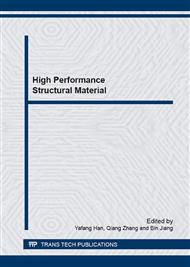p.676
p.682
p.688
p.694
p.699
p.705
p.711
p.715
p.722
Corrosion Behavior of Tungsten Copper Alloy Produced by Infiltration Sintering
Abstract:
In this paper, W80CuNi0.3 alloy was prepared by cold isostatic pressing (CIP) and infiltration sintering, and its corrosion behavior was investigated by neutral salt spray accelerated test, immersion test and electrochemical measurement. It turned out that in the neutral salt spray and immersion test,the mass loss and corrosion rate of W80CuNi0.3 were far lower than those of 45 steel. The corrosion mainly occurs in the bonding phase of Cu, and the initial corrosion form of W80CuNi0.3 was pitting, the main reason of W80CuNi0.3 corrosion was Cl- erosion. The polarization curves analysis showed that compared with 45 steel, W80CuNi0.3 alloy had higher corrosion potential and lower corrosion current. Therefore, W80CuNi0.3 alloy are prone to stable passivation, so it has superior corrosion resistance.
Info:
Periodical:
Pages:
699-704
Citation:
Online since:
April 2015
Authors:
Price:
Сopyright:
© 2015 Trans Tech Publications Ltd. All Rights Reserved
Share:
Citation:


